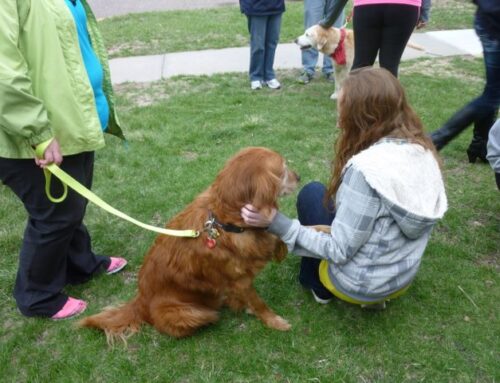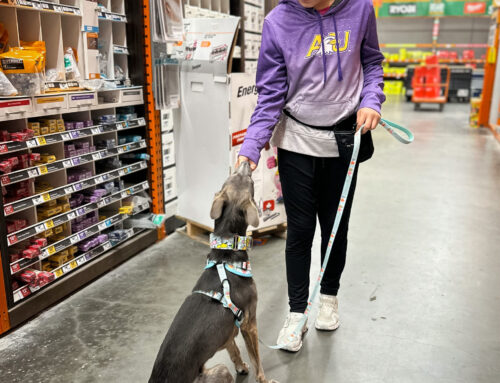As one of the largest therapy dog organizations in the United States, we are often asked about the benefits of therapy dogs in classroom settings. Therapy dogs have been called “miracle workers” because of their calming effect on students and teachers. In this article, we will discuss the benefits of having therapy dogs the in the classroom, how therapy dogs have been used to help children with autism, their use on college campuses and how therapy dogs aid and comfort communities after school tragedies.
What are the Benefits of Having a Therapy Dog in the Classroom?
Therapy dogs have been active in schools for some time. Teachers and administrators have witnessed the effects therapy dogs have on students and themselves.
The benefits of having therapy dogs in the classroom include:
Physical benefits. Interaction with therapy dogs has been shown to reduce blood pressure, provide physical stimulation and assist with pain management.
Social benefits. A visiting therapy dog promotes greater self-esteem and focused interaction with other students and teachers.
Cognitive benefits. It has been empirically proven that therapy dogs stimulate memory and problem-solving skills.
Emotional and mental health benefits. A recent national survey of adolescent mental health found that about 8 to 10 percent of teens ages 13 to 18 have an anxiety disorder. A therapy dog can lift moods in the classroom, often provoking laughter. The therapy dog is also there to offer friendship and a shoulder to lean on for students.
How Have Therapy Dogs Been Used in Classrooms to Help Children with Autism?
While therapy dogs have calming effects and reduced stress levels in most students, children with disabilities can present a unique challenge. Because of the wide range of intensity, behaviors can be unpredictable.
The classroom can be a stressful and overwhelming environment due to social challenges and peer pressure. Therapy dogs can reduce the effect of this allowing a child with autism to feel more at ease and open to social behavior. Researchers have found that children with autism are more social when playing with therapy dogs as opposed to toys. New research offers further proof that animals can also have a therapeutic effect.
The kindness and the gentleness of therapy dogs help children with autism simply by being there. The child may not speak or may want to engage in compulsive behavior and the therapy dog is by his/her side, ready to engage.
How Have Therapy Dogs Been Used on College Campuses?
A growing number of colleges across the country offer pet therapy programs that bring therapy dogs to students that need a break from the pressures of school. Many college students are living away from home for the first time and appreciate the comfort brought by therapy dogs. Since the programs are typically volunteer-based, they usually do not cost colleges any money.
The Lillian Goldman Law Library at Yale gained national attention in the spring of 2011 because of their use of therapy dogs. The impetus for introducing a therapy dog to the Yale Law School library was two-fold. Attending law school is stressful. Some of the students who were new to the rigors of law school used therapy dogs to adjust to new teaching methods, and materials can elevate stress levels.
The idea was to help them slow down and cope with their anxieties in an environment where many students stay up late to finish assignments and prepare for the following day.
How Have Therapy Dogs Helped Students Cope with Tragedy?
All too often we hear about a tragedy at a school that makes national news. What many of us do not hear very often is how the students and community were helped by therapy dogs. Therapy dogs were deployed when 26 people — 20 students and six adults — were shot and killed at the Sandy Hook Elementary School in Newtown, Connecticut. The devastation was felt not only within the Sandy Hook community but through the United States.
Therapy dogs were among the first responders to the aftermath of the shooting. Overwhelmed children and parents said that petting the dogs gave them relief from their sadness. Therapy dogs were also introduced to Virginia Tech campus in Blacksburg, Virginia to aid and comfort the faculty, staff and student body to help cope with the tragedy of the loss of 32 people.
Contact the Alliance of Therapy Dogs
The abilities of therapy dogs never seem to fail to surprise. From helping students with disabilities to being called upon to act as first responders in a tragedy. Therapy dogs have moved from a want to a need. Contact the Alliance of Therapy Dogs to learn the ways in which therapy dogs can help students, faculty, and staff.






